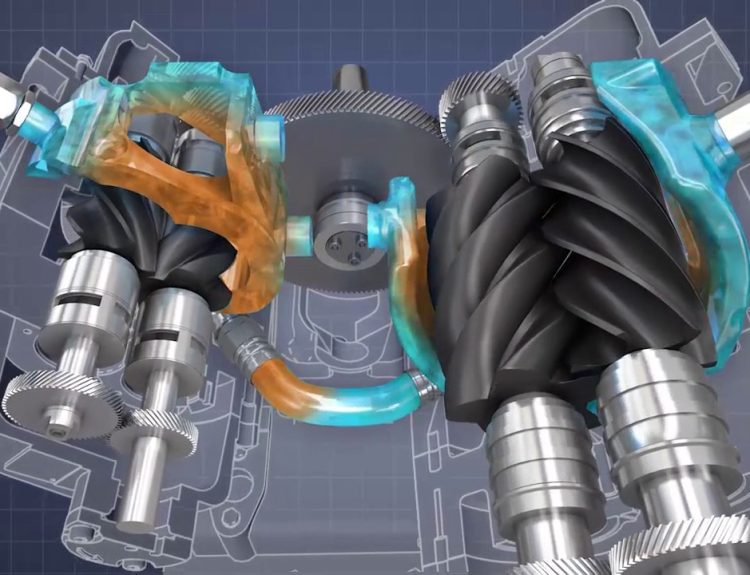Infrared detectors play an indispensable role across a wide array of technologies, from night vision gear and thermal imaging scopes to medical diagnostic tools and spacecraft instruments. However, exactly how do these sensors function, and what enables them to be so adaptable? In this report, we’ll explore the scientific principles behind infrared detectors—delving into their ability to perceive heat and wavelengths beyond visible light—and uncover the plethora of practical uses reliant on this powerful technology. Whether you’re a curious reader or a tech aficionado, this overview will help you better comprehend the invisible realm that infrared detectors bring to light.
The Physics That Enable Infrared Perception: Essentials to Know
Breaking It Down Simply: The Mechanisms of Infrared Sensors
Positioned at the core of all infrared detectors is a semiconducting material that generates an electric signal upon absorbing infrared photons. The basic concept involves converting infrared radiation into an electric current, basically allowing the instrument to “see” heat. Each infrared photon possesses a specific energy level contingent on its wavelength, and when striking the detector, can stimulate electrons in the semiconductor, resulting in elevated conductivity. This process is quantified and processed to produce data that can be interpreted or displayed as an image, temperature reading, or other meaningful output.
The Role of Quantum Mechanics in Infrared Detection
The complex function of infrared detectors relies heavily on the perplexing principles of quantum mechanics. When infrared photons collide with the atomic structure of a detector material, they cause excitations that can only be understood through quantum behavior at the subatomic level. Typically, electrons in a semiconductor exist in a precise energy level and lack the freedom to move; however, when absorbing the energy from an incoming infrared photon, an electron can leap to a higher energy level, becoming liberated to flow. This phenomenon springs from the intricate band theory of solids, which demarcates the permitted energy bands for electrons within materials. Effectively anticipating which materials will excel as infrared detectors is contingent upon quantum mechanics, which elucidates the interaction between photons and electrons on the tiniest of scales. Consequently, advancements in infrared technology frequently have their roots in novel understandings of quantum mechanics, illuminating potential pathways to more perceptive and accurate methods of detection.
Types of Infrared Detectors: From Thermocouples to Photodiodes
Infrared detectors can be categorized into diverse types contingent on their operational mechanisms and constituent materials. Thermocouples, amongst the earliest types, gauge temperature fluctuations via the voltage produced from two dissimilar metals joined together. Thermistors and bolometers are also thermal detectors that respond to heat variations but function with assorted materials and principles. For instance, thermistors alter their resistance relative to temperature, while bolometers measure the power of impinging electromagnetic radiation. In contrast, photodiodes are semiconductor devices precisely engineered to detect infrared light. These detectors can directly transform incoming infrared radiation into an electrical signal, offering benefits in swiftness and sensitivity. Emerging technologies also give rise to novel types of detectors including quantum dots and graphene-based sensors, which promise enhanced performance regarding sensitivity, bandwidth, and operational temperatures.
Exploring the Spectrum: The Unique Band of Infrared Light
Infrared light plays an integral role in modern technology despite its invisibility to the human eye. Within the electromagnetic spectrum, infrared falls between visible light and microwaves with wavelengths ranging from 700 nanometers to 1 millimeter. This region further divides into near-infrared, mid-infrared, and far-infrared based on interactions with materials. Near-infrared from 700 nanometers to 1.5 micrometers sees widespread application in fiber optics. Mid-infrared between 1.5 and 5 micrometers underpins sensors and thermal cameras. Far-infrared spanning 5 micrometers to 1 millimeter commonly contributes to heating functions. Our comprehension of infrared behavior revolutionized diverse fields, emphasizing continued examination within this mysterious realm.
The Hidden Spectrum: Infrared Light’s Impact
Though unseen, infrared permeates our technological foundation through conveying heat. Objects discharge infrared radiation reflecting internal temperature, invaluable for overseeing warmth, security cameras, or diagnostic equipment avoiding contact. Furthermore, infrared encounters less diffusion by air particles than visible light, advancing long-distance observation. Satellites leverage this trait, as do environmental monitors. Telecommunication thrive thanks to infrared’s interference-free transmission of sizable data volumes. Even low-tech contraptions like remote controls capitalize on infrared signaling for convenience. While eluding the human eye, infrared unveils its importance through groundbreaking applications across industries and daily life, a testament to the spectrum’s invisible yet significant influences.
Applications in Astronomy: A Glimpse into the Cosmos
Infrared detectors have fundamentally reshaped our understanding of the far reaches of space. Astronomers can now observe celestial bodies obscured by dust clouds that were previously unseen using visible light alone. Advanced space telescopes such as the pioneering Hubble and its successors leverage infrared sensing to uncover the radiant heat signatures of distant stars, galaxies, and newly detected exoplanetary systems. Through analyzing these infrared wavelengths, scientists gain key insights into the emergence and evolution of cosmic structures across the broader universe. Moreover, observations conducted within the infrared spectrum may illuminate the presence of complex organic molecules in developing planetary systems, providing support for theories on the genesis of life itself. As technological capabilities expand ever outward, so too will our capacity to explore and interpret the mysteries of the cosmos, driven fundamentally by ongoing progress in infrared detection.
Infrared Detection in Action: Practical Uses Across Industries
From Military Operations to Medical Diagnostics: The Adaptability of Infrared Technology
Infrared detectors now fill important functions across diverse sectors, transforming capabilities and boosting potential in numerous areas. Within military operations, infrared technology proves integral to night vision, surveillance systems, and targeting abilities. Sensors can perceive the thermal emissions of objects, enabling personnel to “see” under conditions that would otherwise remain shrouded in darkness or severe weather. Meanwhile in healthcare, infrared thermography has emerged as a noninvasive diagnostic approach, allowing practitioners to map surface body temperatures and search for early signs of inflammation, cardiovascular issues, and stress fractures. In addition, infrared measurements provide industrial applications with new ways to monitor equipment temperatures and optimize energy efficiency—underscoring the exceptional versatility and wide-reaching impacts of infrared detection advances.
Consumer Electronics: The Wave of Infrared Innovation in Intelligent Gadgets
The consumer electronics arena has undergone a profound transformation due to infrared detection, radically changing how users interact with technology. Many modern smart devices, such as smartphones and tablets, leverage infrared sensors for applications ranging from biometric authentication to wireless control. For instance, infrared facial recognition has become a popular method for securely unlocking devices. Furthermore, intelligent home appliances use infrared detectors to facilitate motion detection and automated lighting adjustments, enhancing convenience and energy efficiency. Additionally, the integration of infrared communication between devices allows for seamless interactions devoid of tangled wires or miscommunications inherent in traditional remotes. The continuing progress and refinement of infrared technology portends a revolutionary destiny for consumer electronics.
Home Automation and Security: Augmenting Protection with Infrared Sensors
Home automation and security systems increasingly incorporate infrared detectors to ensure safety and convenience in domestic settings. Motion detectors employ passive infrared (PIR) technology, which registers variations in heat from a moving object relative to the static surroundings. This capability delivers an intelligent security solution by alerting homeowners to intrusions and triggering alarms or cameras. Moreover, integrated systems with IR sensors can function alongside video surveillance to permit precise monitoring. Beyond security, infrared technology enhances home automation through intelligent thermostats that utilize temperature readings to optimize energy usage and maximize comfort. Such applications are critical in a world that emphasizes energy conservation and integrated living spaces, positioning infrared technology as a key player in modern smart homes.
The Future Potential of Infrared Technology: Trends and Breakthroughs
Emerging Technologies: The Next Generation of Infrared Sensors
Though infrared detection has made phenomenal strides, its prospects remain dazzlingly bright. Materials and techniques advancing at a dizzying pace promise enhanced viewing and novel uses. Emerging detector types — including pixel-packed microbolometers and precisely-tuned quantum cascade lasers — push the boundaries of thermal perception. Microbolometers leverage exotic sensing substances enabling sharp, affordable imagery for all. Meanwhile quantum cascade lasers furnish flawless wavelength control and efficiencies broadening applications in spectroscopy and signals. As scholars explore concepts like graphene and nanotech-enhanced sensors, the infrared realm readies for unprecedented flowering and betterment.
Environmental Monitoring: Harnessing Infrared for a Greener Tomorrow
Global issues like climate flux and habitat care summon infrared expertise crucially. Satellites bearing infrared detectors grant priceless data on land conversion, deforestation, and urban heat islands, guiding policy and asset administration. Infrared probes also detect greenhouse gas outgassing and surface temperature shifts, yielding key insights into weather patterns informing climate action blueprints. What’s more, infrared technologies’ real-time tracking empowers sustainable practices across industries, minimizing harm to the environment and maximizing resource optimization. Ultimately, infrared detection lays a tech-driven foundation for a greener, more sustainable future.
While prospects for infrared technology seem promising, challenges remain.
Limitations involve temperature sensitivity, response times, and noise interference with accuracy. Detectors operating effectively across broad temperatures without degradation presents profound engineering hurdles. Advancements in filtering noise obscuring data require signal processing progress. Continuous research must tackle these constraints while improving resolution, miniaturization, and efficiency. As infrared detection advances, collaboration of scientists, technologists, and industry pioneers crucial for innovative solutions enabling technology’s vast capacities.





